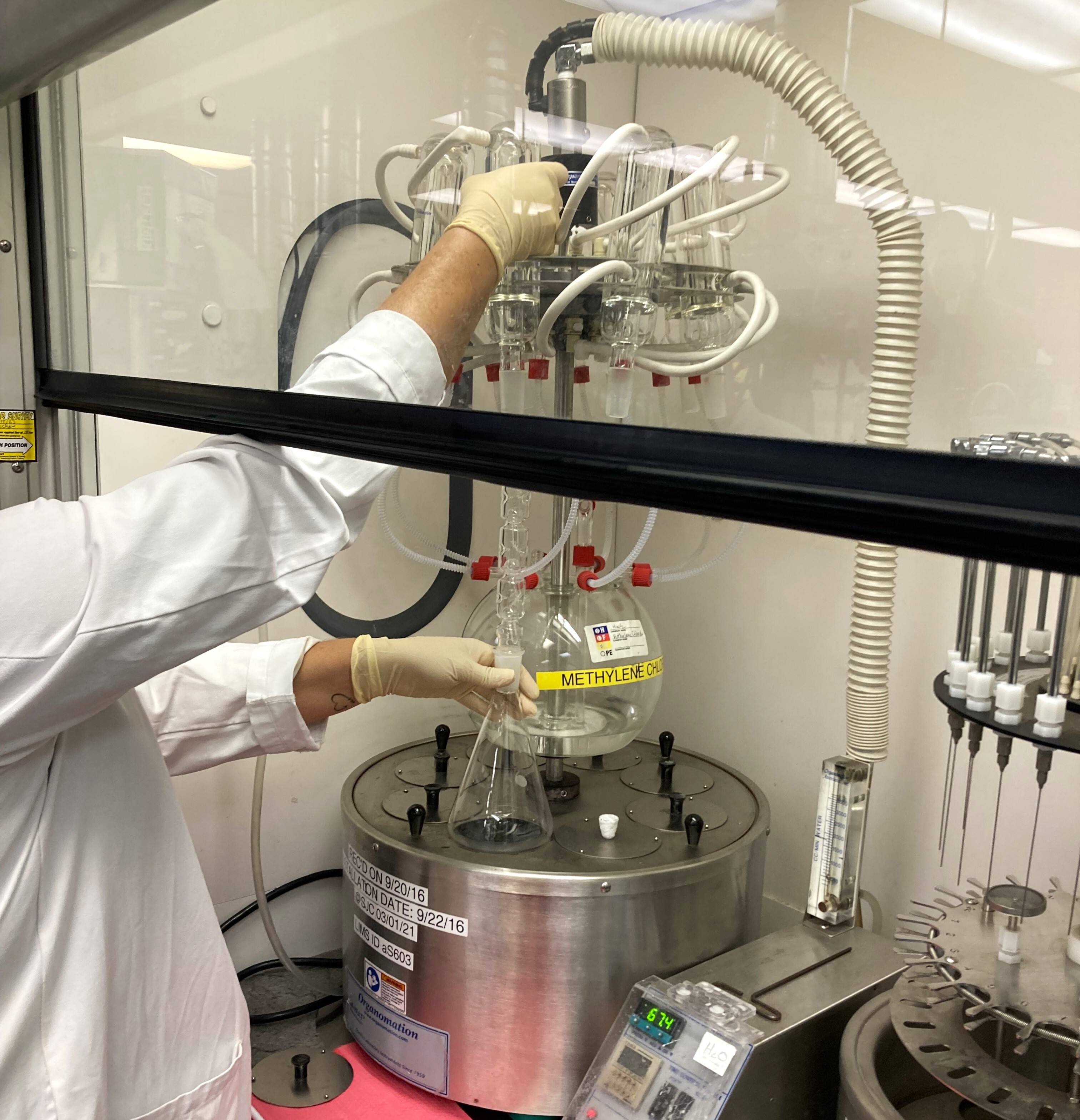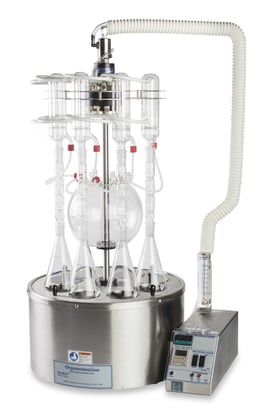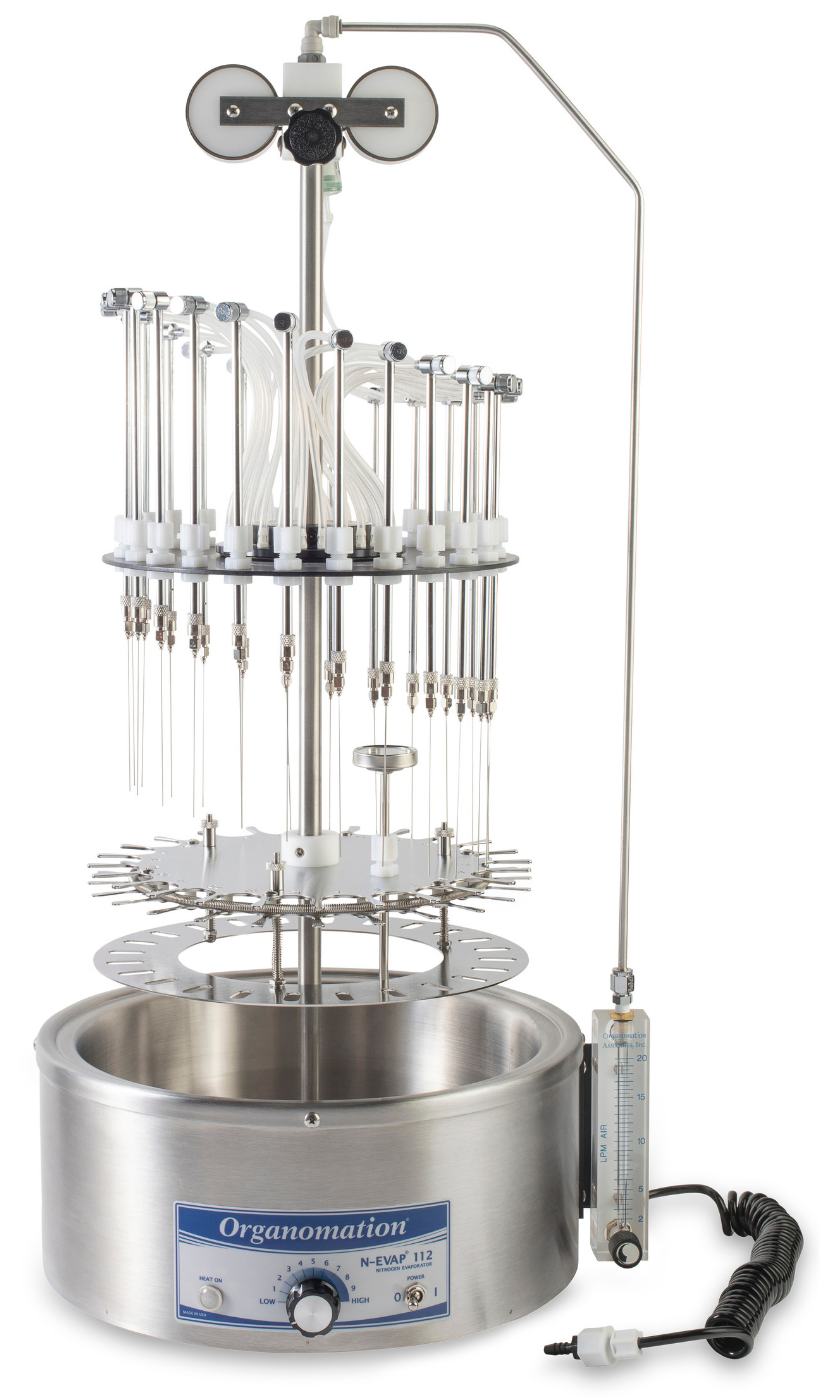Environmental, Kuderna-Danish Evaporation
/ Amy Valladares
Introduction
Sample preparation for semi-volatile organic compound (SVOC) analysis is one of the most time-consuming and error-prone steps in the analytical process. For laboratories following U.S. EPA Methods 3510C and 8270E, efficiency and consistency are critical — especially when it comes to solvent evaporation using the Kuderna-Danish (K-D) technique.
Traditionally, EPA Method 3510C recommends a one-at-a-time approach using basic glassware and individual solvent recovery. But for labs processing multiple samples daily, this can create a significant bottleneck. That’s where the Organomation S-EVAP concentrator offers a powerful upgrade. This post walks through how to adapt the standard method using the S-EVAP, increasing throughput while maintaining compliance and analytical integrity.
Preparing the S-EVAP concentrator:
1. Preheat the S-EVAP water bath to 60-65 °C. The bath should be filled no higher than 4 inches below the rim of the bath.
2. Turn on coolant flow to the S-EVAP water manifold. Recommended coolant temperature is 0-20 °C at a minimum flow rate of 2500 CCM. This can be provided through a cool tap or a recirculating chiller. Each condenser should be connected to either an individual or central solvent collection flask.
Preparing the Kuderna-Danish (K-D) assemblies:
3. Assemble a Kuderna-Danish (K-D) concentrator by attaching a 10-mL concentrator tube to a 500-mL evaporation flask.
4. Dry the extract by passing it through a drying column containing about 10 cm of anhydrous sodium sulfate. Collect the dried extract in a K-D concentrator. Rinse the Erlenmeyer flask, which contained the solvent extract, with 20 - 30 mL of methylene chloride and add it to the column to complete the quantitative transfer.
5. Add one or two clean boiling chips to the flask and attach a three-ball Snyder column. Prewet the Snyder column by adding about 1 mL of methylene chloride to the top of the column.
6. Place the K-D apparatus into the S-EVAP concentrator so that the evaporation flask sits in the cover disk. The concentrator tube should be partially immersed in the heated water, and the lower portion of the flask below the cover disk will be surrounded by hot water vapor.
7. Connect the Hopkins condenser to the top of the Snyder column to recover evaporated solvent vapor.
8. Repeat with all extracts (up to 8) to be concentrated.
Concentrating the extracts:
9. Adjust the bath temperature as required such that the balls of the Snyder column actively chatter, but the chambers will not flood. If the column does not chatter, bath temperature should be increased. If the chambers flood, bath temperature should be decreased.
10. When the apparent volume of liquid reaches 1 mL, remove each K-D apparatus (along with the Snyder column) from the S-EVAP concentrator and allow them to drain and cool for at least 10 minutes.
11. Transfer the recovered solvent to an appropriate waste receptacle. Individual solvent collection flasks can be disconnected from the Hopkins condensers for transfer. Central collection flasks should be drained using a siphon.
12. Remove the Snyder column from each K-D apparatus and rinse the flask and its lower joints into the concentrator tube with 1-2 mL of methylene chloride.
Final concentration to 1 mL:
13. Preheat an N-EVAP evaporator to 35 °C.
14. Transfer each concentrator tube to an N-EVAP evaporator preheated to 35 °C.
15. Evaporate under a stream of nitrogen at 0.33 L/min per active sample until all extracts have reached a final volume of 1 mL.
16. If needed, rinse the internal wall of the tubes with methylene chloride during evaporation.
17. If sulfur crystals are a problem, proceed to Method 3660 for cleanup. Otherwise, the extracts may now be analyzed according to method 8270E.
Conclusion
By adapting Method 3510C to utilize the S-EVAP concentrator, laboratories can dramatically improve sample throughput, solvent recovery, and reproducibility in SVOC analysis workflows. Whether you're working in environmental testing or industrial hygiene, the S-EVAP offers a compliant and scalable solution to streamline K-D evaporation.
For labs that demand both precision and productivity, the S-EVAP brings modern efficiency to a classic EPA method, ensuring that your sample prep process works as hard as your analysis.
To discuss your lab's specific application and to determine which sample concentration equipment is best for you, contact our team at sales@organomation.com or start a live chat during normal business hours.
